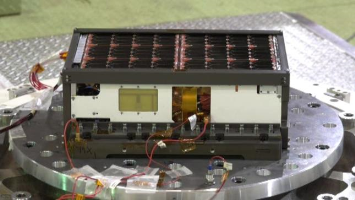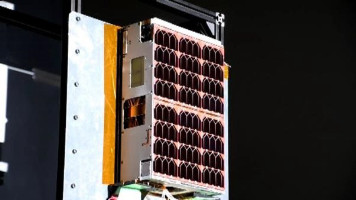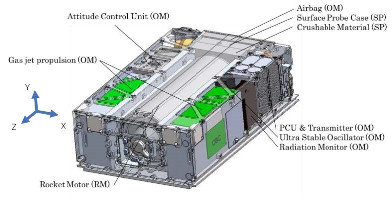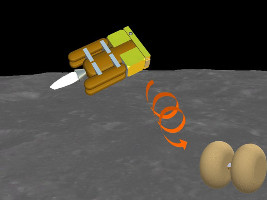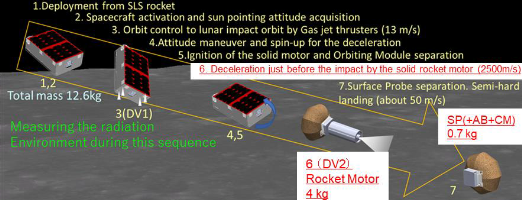| Satellite name | OMOTENASHI |
|---|---|
| Form factor | CubeSat |
| Units or mass | 6U |
| Status | Was semi-operational until 2022-11-17, 1 day (Connection was established as per official Twitter but low voltage and attitude control issues lead to transmitter being turned off at the end of first pass as of 2022-12-23. No further contacts as per IAC 2023 paper.) |
| Launched | 2022-11-16 |
| NORAD ID | ? (Not catalogued?) |
| Deployer | CSD (Canisterized Satellite Dispenser) [Planetary Systems Corporation] |
| Launcher | SLS (Space Launch System) (Artemis-1) |
| Entity name | University of Tokyo |
| Institution | University |
| Entity | Academic / Education |
| Nation | Japan |
| Partners | JAXA |
| Oneliner |
Demonstrate the technology for low-cost and very small spacecraft to explore the lunar surface with a landing probe. |
| Description |
3 modules: orbiting module, retro motor module, and surface probe. The CubeSat will also take measurements of the radiation environment near the moon as well as on the lunar surface. Super-Small Solid Rocket Motor to deaccelerate 2500 m/s just before surface impact. Surface probe will have a semi-hard landing at about 50 m/s. |
| Results |
Tumbling; early signal, no signal now. |
| Failure cause | Spacecraft was rotating rapidly due to leaky propulsion and solar cells were opposite direction to the Sun. Transmitter turned off at the end of the pass due to low voltage and has not restored. |
| Notes |
One of 13 SLS 6U Interplanetary or Lunar CubeSats |
| Sources | [1] [2] [3] |
| Photo sources | [1] [2] |
| COTS subsystems |
|
| Subsystems sources | [1] |
| Keywords | Propulsion, Beyond Earth orbit |
| On the same launch |
Last modified: 2024-12-15
